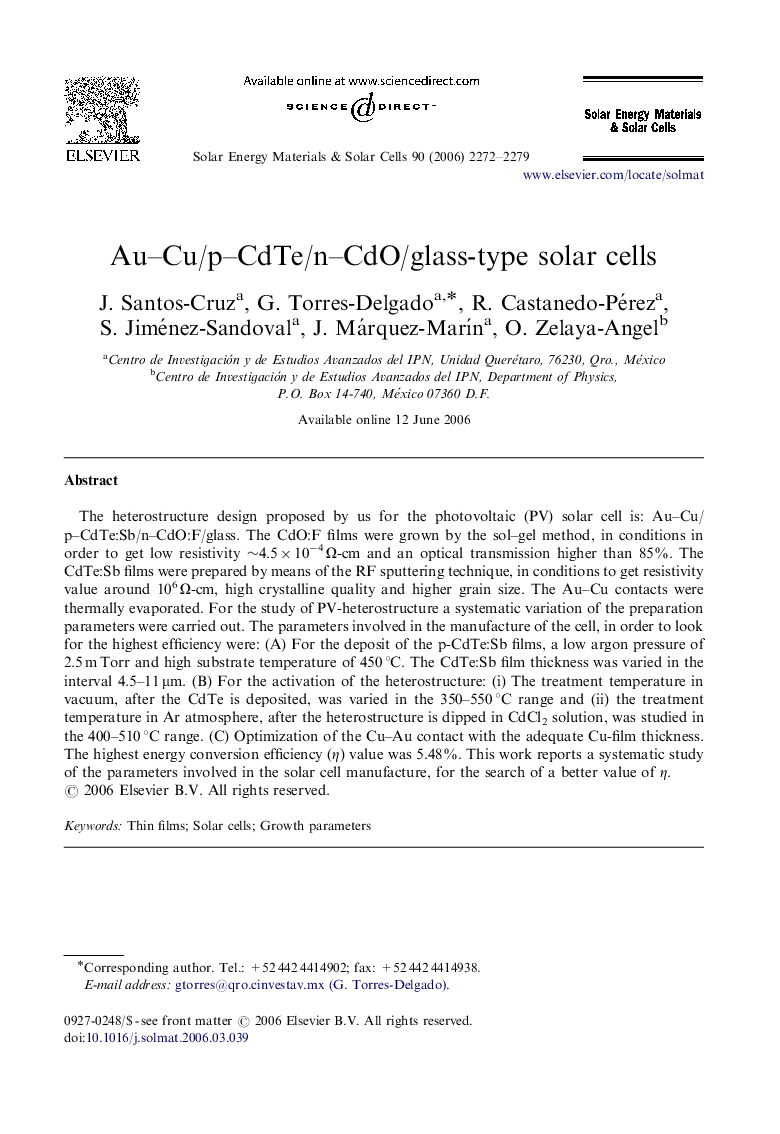| Article ID | Journal | Published Year | Pages | File Type |
|---|---|---|---|---|
| 80901 | Solar Energy Materials and Solar Cells | 2006 | 8 Pages |
The heterostructure design proposed by us for the photovoltaic (PV) solar cell is: Au–Cu/p–CdTe:Sb/n–CdO:F/glass. The CdO:F films were grown by the sol–gel method, in conditions in order to get low resistivity ∼4.5×10−4 Ω-cm and an optical transmission higher than 85%. The CdTe:Sb films were prepared by means of the RF sputtering technique, in conditions to get resistivity value around 106 Ω-cm, high crystalline quality and higher grain size. The Au–Cu contacts were thermally evaporated. For the study of PV-heterostructure a systematic variation of the preparation parameters were carried out. The parameters involved in the manufacture of the cell, in order to look for the highest efficiency were: (A) For the deposit of the p-CdTe:Sb films, a low argon pressure of 2.5 m Torr and high substrate temperature of 450 °C. The CdTe:Sb film thickness was varied in the interval 4.5–11 μm. (B) For the activation of the heterostructure: (i) The treatment temperature in vacuum, after the CdTe is deposited, was varied in the 350–550 °C range and (ii) the treatment temperature in Ar atmosphere, after the heterostructure is dipped in CdCl2 solution, was studied in the 400–510 °C range. (C) Optimization of the Cu–Au contact with the adequate Cu-film thickness. The highest energy conversion efficiency (η) value was 5.48%. This work reports a systematic study of the parameters involved in the solar cell manufacture, for the search of a better value of η.
